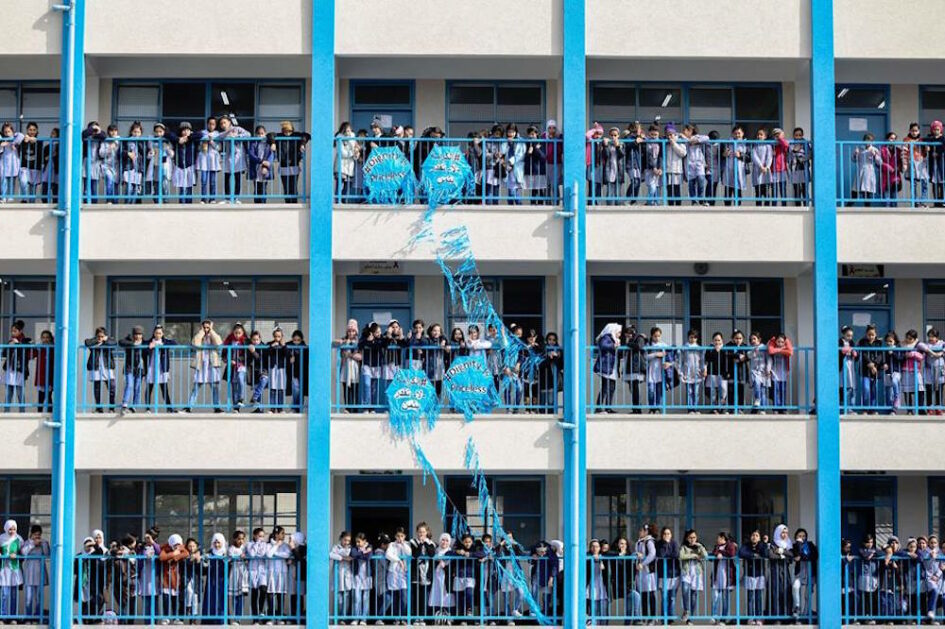The right to education is protected in international human rights law, including by article 26 of the Universal Declaration on Human Rights, the International Covenant on Economic, Social and Cultural Rights, article 28 of the Convention on the Rights of the Child, article 10 of the Convention on the Elimination of All Forms of Discrimination against Women and numerous other treaties. An occupying power has a responsibility to guarantee the right to education according to the fourth Geneva Convention and United Nations General Assembly resolution 64/290 on the right to education in emergency situations.
The provision of education in the oPt is complicated by the division of the territory into three areas and the further subdivision of the West Bank. In Gaza and the West Bank, excluding East Jerusalem, basic education is provided by public schools run by the Ministry of Education and Higher Education (MoEHE), schools for refugees run by the United Nations Relief and Works Agency (UNRWA) and private schools, registered with the MoEHE. Secondary education is provided by a combination of public and private schools. In East Jerusalem education is provided by schools funded and overseen by the Jerusalem Education Administration (JEA), schools managed by UNRWA and private schools which are independently funded or subsidised by the JEA.
In annexed East Jerusalem restrictive planning regulations have contributed to a significant shortage of at least 2,500 classrooms for Palestinian students and inadequate cramped conditions in many schools. The Israeli government’s five-year plan for education in East Jerusalem, approved in May 2017, provides financial incentives for schools to switch to teaching Palestinian students the Israeli curriculum instead of the Palestinian Authority curriculum. The Israeli government has also threatened to withhold funding, recognition and permits to schools using the Palestinian curriculum, according to the UN. There is a high drop out rate for Palestinian students in East Jerusalem with at least a third not completing 12 years of schooling and 17,000 unregistered for education.
Many Palestinian schools, particularly in Area C and East Jerusalem are at risk of demolition by the Israeli military. Five schools were demolished or seized by Israeli forces in 2018, whilst in 2020 a total of 51 schools were under threat of demolition in the West Bank, including 43 schools in Area C and eight schools in East Jerusalem.
School attendance for Palestinian children is particularly affected by restrictions on freedom of movement. Physical barriers including checkpoints, temporary checkpoints, the separation barrier and settlements and associated infrastructure regularly add long delays to the school journey, which is made worse by the lack of safe transport.
In Area C more than a third of Palestinian communities lack access to a primary school, forcing many children to walk long distances to school, often crossing military checkpoints. Where schools do exist, many lack facilities, safe play areas or water and sanitation, increasing drop out rates and educational attainment.
Palestinian students are often subjected to violence and harassment from Israeli soldiers or illegal settlers, particularly on the journey to and from school. In 2019 there were 328 education related incidents affecting 19,913 students, a third of which involved the firing of teargas either on school property or at students on their journey to and from school. The approximately 4,200 schoolchildren living in the H2 area of Hebron are at particular risk, and are regularly subjected to harassment, intimidation and delays as they pass through checkpoints on their way to school. The withdrawal of international human rights monitors in 2019 has increased the risks for schoolchildren living in H2.
Violence and harassment, together with regular armed conflict, the restrictions of the occupation and high levels of poverty all contribute to a high drop-out rate of Palestinian students from schools.
The arrest and detention of children by the Israeli military is also a barrier to education. In September 2020 there were 173 child prisoners in detention in Israeli Prison Service (IPS) and Israeli Defense Force facilities. Recent figures are not available as the IPS has not responded to freedom of information requests on child prisoner numbers since October 2020.
The tight land, sea and air blockade of Gaza, severe shortages of electricity, water and sanitation and adequate housing, high levels of poverty and unemployment and the trauma of multiple conflicts all have an impact on Gaza’s underfunded and overcrowded education system. Approximately two-thirds of schools run on a double or triple shift system in order to accommodate students, resulting in reduced teaching hours. UNRWA, which provides approximately 60 percent of basic education in Gaza regularly faces funding crises, whilst teachers in non UNRWA schools sometimes receive partial salaries or wait several months between payments, leaving schools reliant on voluntary contributions from parents.
Successive Israeli military attacks on Gaza have affected the right to education. During the 2014 airstrikes 258 education facilities were damaged, including 26 beyond repair. A further 27 schools were damaged in 2019. The blockade has slowed the reconstruction of damaged schools by limiting access to essential building materials. During the May 2021 bombing of Gaza 141 education facilities were damaged and schools were forced to end the academic year early. Many UNRWA schools were used as shelters for internally displaced people.
Adapted from ‘Talking about Palestinian rights: A UNISON guide for activists’
